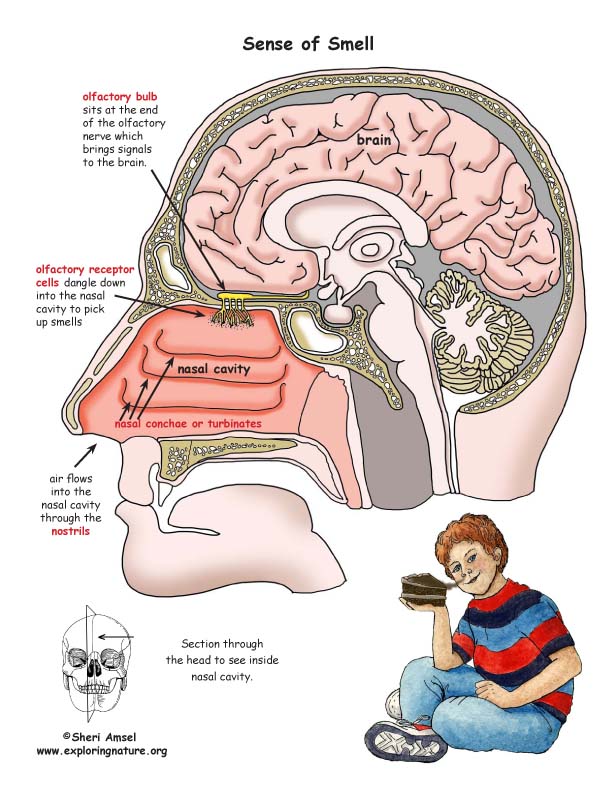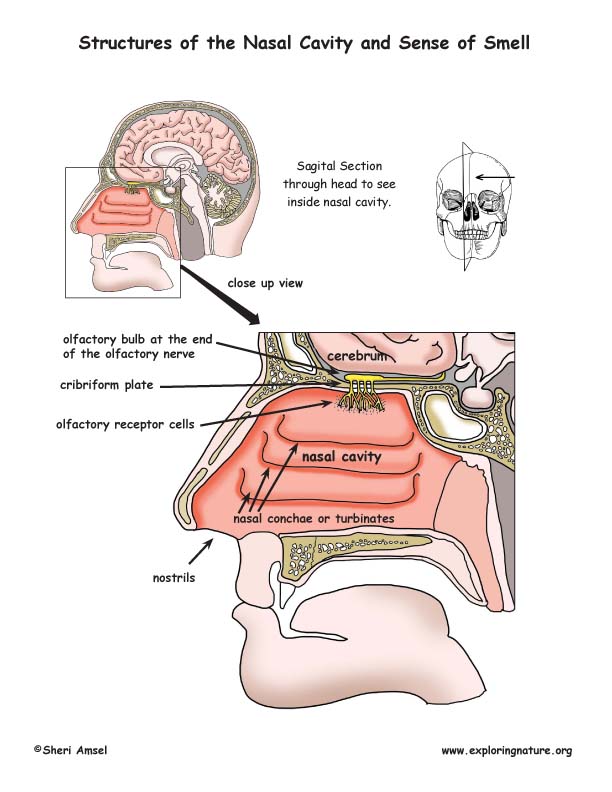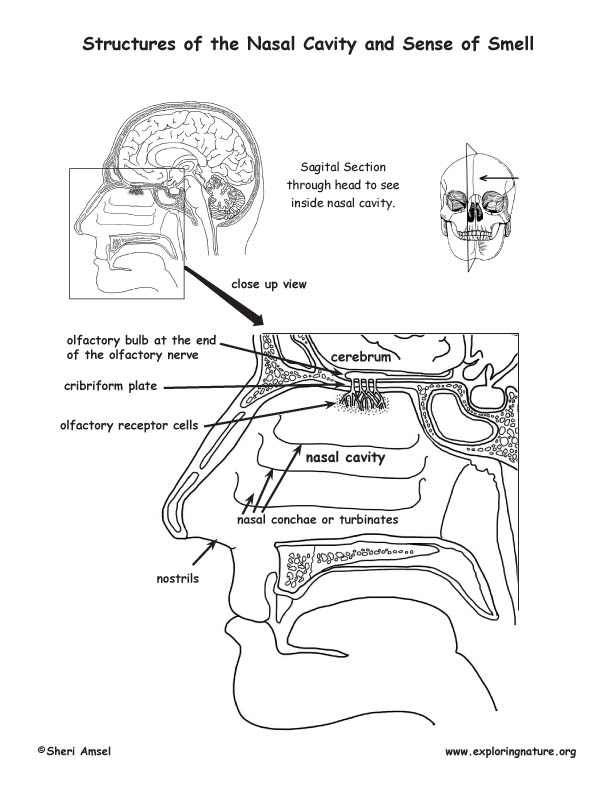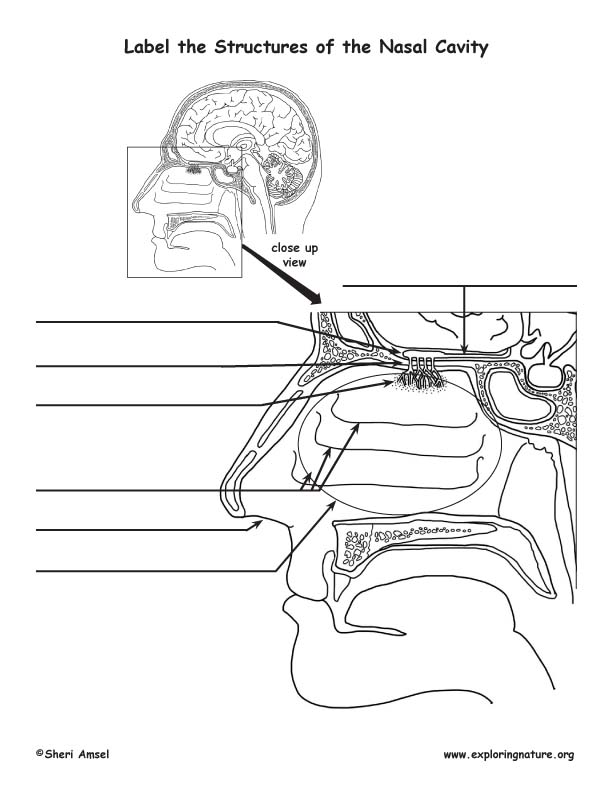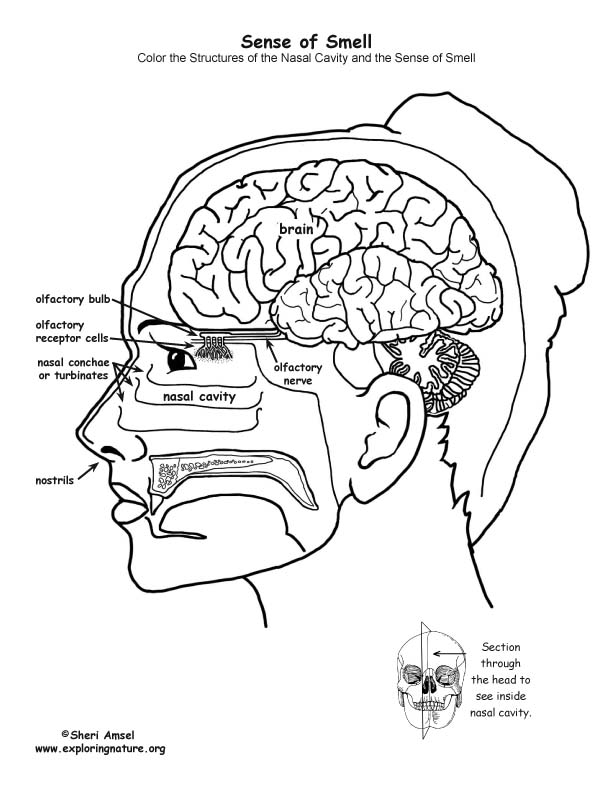

Inside your nose is an open area called the nasal cavity. On the roof of the nasal cavity are special sensory cells called olfactory receptor cells. They extend through small holes in the bony roof of the nasal cavity (the ethmoid bone of the skull). This sieve-like structure is called the cribriform plate. The receptor cells are part of the olfactory nerve (the first cranial nerve) which takes the sensory information to the part of the brain that interprets and identifies different scents.
Smells can be powerful stimuli – causing a sense of pleasure, disgust, or even alarm. Consider the smell of a bakery (pleasure), or a filthy rest stop washroom (disgust), or the acrid smell of smoke inside a building (alarm).
The structure of the nasal cavity helps to enhance the sense of smell. There are grooves on the wall of the nasal cavity called nasal conchae or nasal turbinates. Their shape helps the inhaled air circulate around the nasal cavity and increases the surface area of warm, moist tissue with which the air makes contact. The nasal tissue warms and helps filter (with ciliated epithelium) the air before it travels into the lungs.
When you detect a smell and sniff at it, you are increasing the number of scent molecules that will enter your nasal cavity and flow by the olfactory receptor cells on the roof of the nasal cavity, bathing them in sensory stimuli. The olfactory nerve will then send the stimuli to the olfactory center in the brain.
This is a very direct route from the nose to the brain which helps us react quickly to the different smells that we detect. The brain will identify the smell and give a signal how to respond. Some responses are subconscious, like the smell of baking cookies causing your mouth to water or your stomach to rumble. The voluntary, conscious response may be to go in and a cookie. The same can be said of bad smells. The filthy washroom may cause your nose to wrinkle and you will consciously move away quickly. The smell of smoke may cause a sense of alarm and you will leave the building and call 911. All these reactions result from just a few molecules in an inhalation.
Though taste and smell have separate sensors, taste depends a lot on the sense of smell. About 80% of taste comes from the smell sensors. For fine tastes, like the difference between a fresh cookie and a day old cookie, it helps to have a sense of smell.
Our smell receptors are not in the best place for smelling (compared to a fox with a long snout). That is why we have to consciously take a big inhale when trying to get a scent of something into our noses. Luckily, it is not as important of a special sense to our survival as it might be to a fox or hare.
LS1.D Information Processing
K-2 Animals sense and communicate information and respond to inputs with behaviors that help them grow and survive.
3-5 Different sense receptors are specialized for particular kinds of information; Animals use their perceptions and memories to guide their actions.
6-8 Each sense receptor responds to different inputs, transmitting them as signals that travel along nerve cells to the brain; The signals are then processed in the brain, resulting in immediate behavior or memories.
